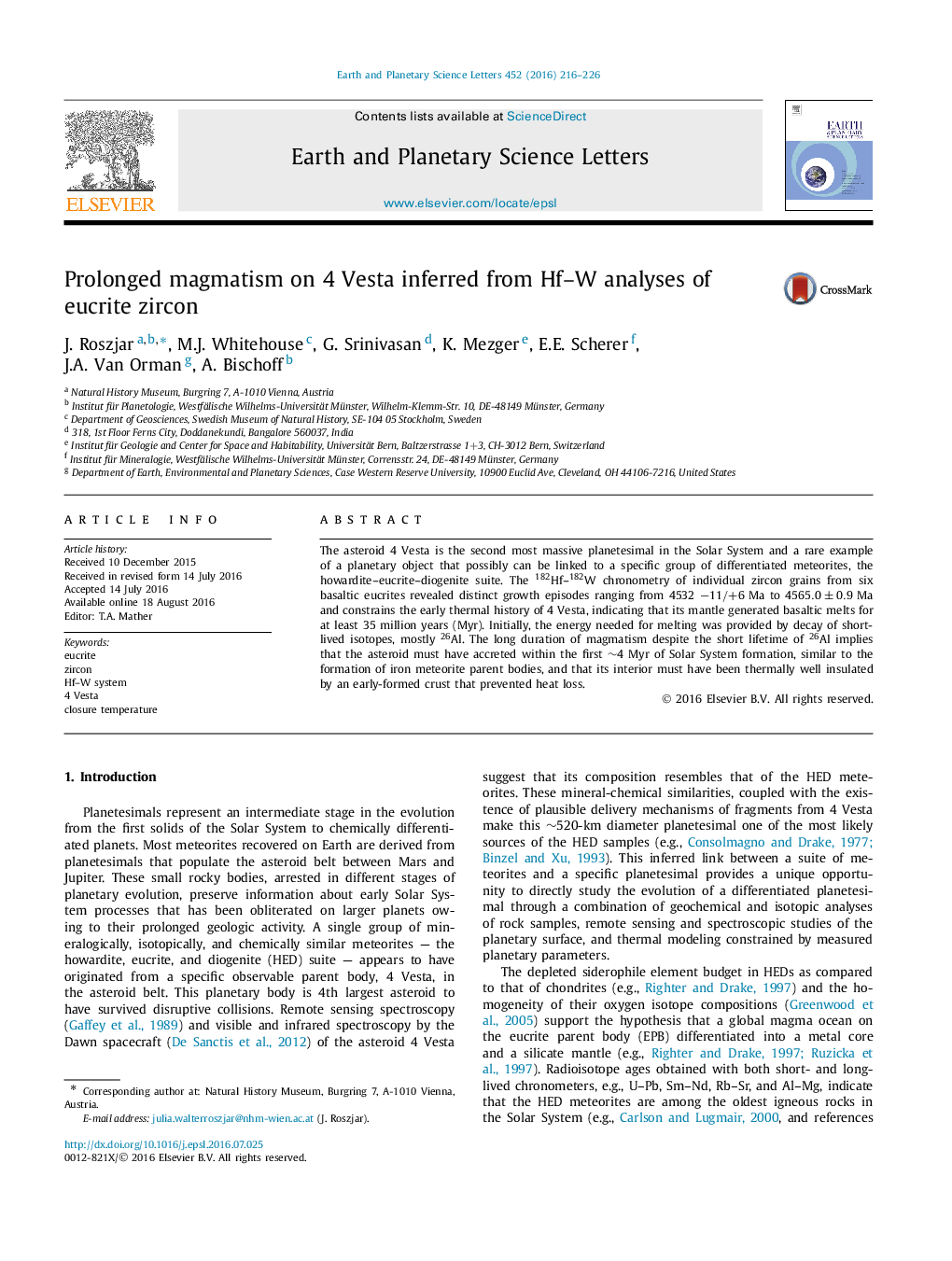| Article ID | Journal | Published Year | Pages | File Type |
|---|---|---|---|---|
| 6427120 | Earth and Planetary Science Letters | 2016 | 11 Pages |
Abstract
The asteroid 4 Vesta is the second most massive planetesimal in the Solar System and a rare example of a planetary object that possibly can be linked to a specific group of differentiated meteorites, the howardite-eucrite-diogenite suite. The 182Hf-182W chronometry of individual zircon grains from six basaltic eucrites revealed distinct growth episodes ranging from 4532 â11/+6 Ma to 4565.0±0.9 Ma and constrains the early thermal history of 4 Vesta, indicating that its mantle generated basaltic melts for at least 35 million years (Myr). Initially, the energy needed for melting was provided by decay of short-lived isotopes, mostly 26Al. The long duration of magmatism despite the short lifetime of 26Al implies that the asteroid must have accreted within the first â¼4 Myr of Solar System formation, similar to the formation of iron meteorite parent bodies, and that its interior must have been thermally well insulated by an early-formed crust that prevented heat loss.
Keywords
Related Topics
Physical Sciences and Engineering
Earth and Planetary Sciences
Earth and Planetary Sciences (General)
Authors
J. Roszjar, M.J. Whitehouse, G. Srinivasan, K. Mezger, E.E. Scherer, J.A. Van Orman, A. Bischoff,
